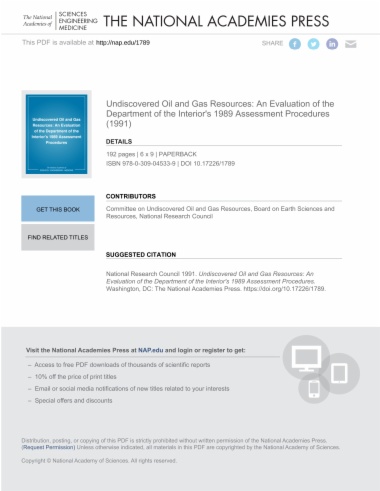When the U.S. Department of the Interior released its 1989 estimates of how much undiscovered oil and gas remain in the United States, a controversy ensued. Some members of the petroleum industry charged that the estimates were too low. This book evaluates the scientific credibility of the statistical and geological methods underlying the estimates.
- Cover
- Front Matter
- Executive Summary
- 1 Introduction: Questions about the Department of the Interior
- 2 Limitations of Resource Assessments
- 3 An Evaluation of the Department of the Interior
- 4 Recommendations
- Appendixes
- A Evaluation of the Hydrocarbon Resource Estimates for the Offshore Areas of Northern and Southern California and Florida South of 26° Latitude
- B Adequacy of the Data Base for Hydrocarbon Estimates of the Georges Bank Area of the North Atlantic Outer Continental Shelf
- C The Effects of Play Mixing in the Permian Basin
- D Background: Components of the Petroleum Resource Base

